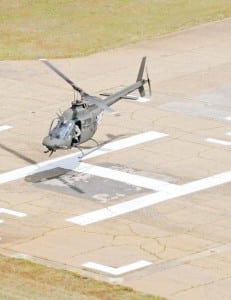TH-67
-
 Navy/USMC
Navy/USMCBell Pitches 407GXi as Evolutionary Upgrade to Navy TH-57 Trainer
With its 407GXi, Bell [TXT] is offering the Navy an evolutionary upgrade to its TH-57 fleet, and the company is banking on the service seeing value in a modern version […]
-
 Army
ArmyHouse Appropriators Support Army Aviation Restructure–To A Point
The House Appropriations Committee (HAC)-passed fiscal year 2015 defense appropriations bill supports the Army aviation restructure initiative–to a point–and that point is: forget getting rid of any of the 182 […]
